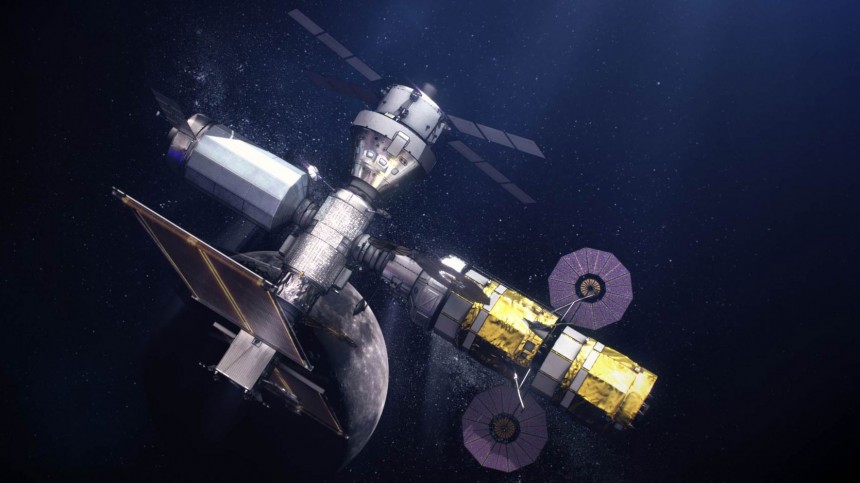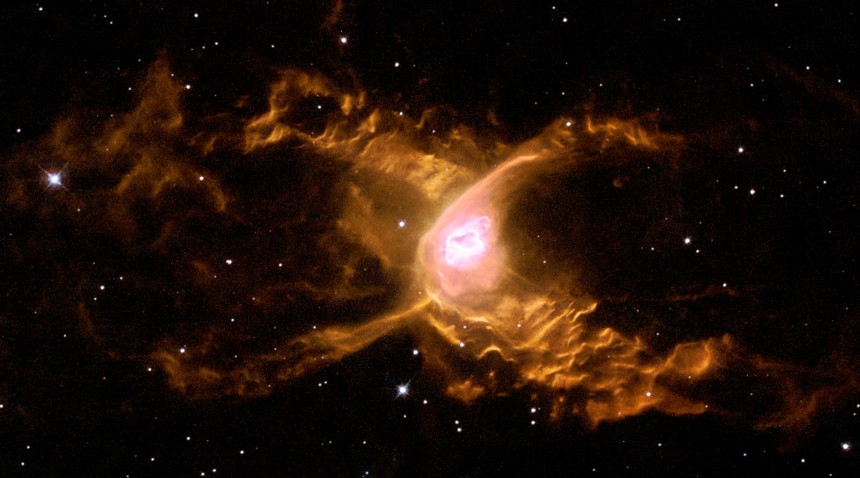Trying to fathom the concept of a light-year is not by any means easy - it’s literally how far light travels in a year, roughly 9,460 billion kilometers or 5,880 billion miles. That’s a lot of zeros.
It is the preferred unit to measure distance in space (excluding the distance to celestial bodies in our own solar system) because most points of interest are at least several light-years away, and reaching them just isn’t feasible right now.
With our current propulsion technology, it’s not even worth trying to calculate how long it would take, because it's somewhere in the tens of thousands of years. For instance, the New Horizons spacecraft, the one that reached Pluto traveling at around 58,500 km/h or 36,400 mph, would need 78,000 years to reach Alpha Centauri, the nearest star system to our own (4.37 light-years away).
That’s why this report about a project conceived by an engineer from NASA, David Burns, has aroused a lot of interest. He purports that a new type of propulsion is possible “in which propellant is not ejected from the engine, but instead is captured to create a nearly infinite specific impulse."
"The engine accelerates ions confined in a loop to moderate relativistic speeds, and then varies their velocity to make slight changes to their mass. The engine then moves ions back and forth along the direction of travel to produce thrust.”
Burns, who posted his idea to the NASA Technical Reports Server where he called it the Helical Engine, says this type of propulsion would be ideal for keeping satellites on the right trajectory without the need to refuel.
He also points out that something like this could also be a great solution for propelling spacecraft across the vastness of space because it could theoretically reach a speed close to the speed of light (and thus greatly reduce the time required for interstellar travel).
If this turns out to be feasible, it would make humanity completely reevaluate its position on space travel. Near-light-speed travel would enable us to reach most stars in our solar system within minutes, not the months or years needed with today’s proven tech. It would also allow us to start considering traveling outside our solar system.
The tech is yet to be reviewed by specialists, but the principle behind it does hold water (at least on paper). Basically, think of a box with a rod in the middle and a some sort of weight that slides along the rod (with no friction). Push the weight in one direction and have a spring to push it back and the recoil will also move the box.
Burns says that if there was a way to shrink the mass of the weight when it slides in one direction, it would prevent this movement from just wiggling the box back and forth (and not providing forward motion). If the mass when it slides in one direction would be much higher than the mass when it slides in the other direction, actual acceleration would be generated.
The problem here obviously has to do with intermittently shrinking an object’s mass. But the Helical Engine needs action to be much greater than reaction in order to work. Apparently, it is theoretically possible, according to Einstein’s theory of special relativity (the concept of rest mass and relativistic mass) - near-light speed is known to have mass-altering effects.
This could be solved, says the Helical Engine’s proponent, by using a particle accelerator which would have to be helix shaped and also quite big (a few hundred meters long and a dozen meters in diameter and it would require a few hundred megawatts of power to work). And something as big as this would only really generate just 1 newton of forward thrusts, so it would only work in the frictionless void of space.
It therefore doesn’t sound as compelling to pursue and study this idea further, and it will have to be analyzed and dissected by specialists before it even stands a chance to be taken any further. Options would need to be found in order to shrink it and make it produce more power and yet its advantages still sound so good: constant acceleration without needing propellant and a completely enclosed system, but we’ll have to wait and see what specialists say about this ‘action and no reaction’ idea proposed by Burns.
With our current propulsion technology, it’s not even worth trying to calculate how long it would take, because it's somewhere in the tens of thousands of years. For instance, the New Horizons spacecraft, the one that reached Pluto traveling at around 58,500 km/h or 36,400 mph, would need 78,000 years to reach Alpha Centauri, the nearest star system to our own (4.37 light-years away).
That’s why this report about a project conceived by an engineer from NASA, David Burns, has aroused a lot of interest. He purports that a new type of propulsion is possible “in which propellant is not ejected from the engine, but instead is captured to create a nearly infinite specific impulse."
"The engine accelerates ions confined in a loop to moderate relativistic speeds, and then varies their velocity to make slight changes to their mass. The engine then moves ions back and forth along the direction of travel to produce thrust.”
He also points out that something like this could also be a great solution for propelling spacecraft across the vastness of space because it could theoretically reach a speed close to the speed of light (and thus greatly reduce the time required for interstellar travel).
If this turns out to be feasible, it would make humanity completely reevaluate its position on space travel. Near-light-speed travel would enable us to reach most stars in our solar system within minutes, not the months or years needed with today’s proven tech. It would also allow us to start considering traveling outside our solar system.
The tech is yet to be reviewed by specialists, but the principle behind it does hold water (at least on paper). Basically, think of a box with a rod in the middle and a some sort of weight that slides along the rod (with no friction). Push the weight in one direction and have a spring to push it back and the recoil will also move the box.
Burns says that if there was a way to shrink the mass of the weight when it slides in one direction, it would prevent this movement from just wiggling the box back and forth (and not providing forward motion). If the mass when it slides in one direction would be much higher than the mass when it slides in the other direction, actual acceleration would be generated.
This could be solved, says the Helical Engine’s proponent, by using a particle accelerator which would have to be helix shaped and also quite big (a few hundred meters long and a dozen meters in diameter and it would require a few hundred megawatts of power to work). And something as big as this would only really generate just 1 newton of forward thrusts, so it would only work in the frictionless void of space.
It therefore doesn’t sound as compelling to pursue and study this idea further, and it will have to be analyzed and dissected by specialists before it even stands a chance to be taken any further. Options would need to be found in order to shrink it and make it produce more power and yet its advantages still sound so good: constant acceleration without needing propellant and a completely enclosed system, but we’ll have to wait and see what specialists say about this ‘action and no reaction’ idea proposed by Burns.



